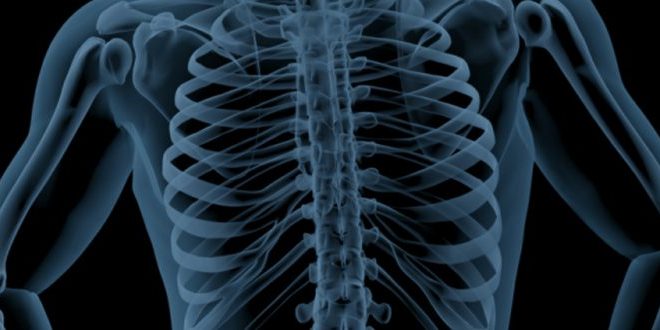Exploring Cranial Chiropractic Techniques
Subtle imbalances in the skull can trigger headaches, TMJ pain, dizziness, and even postural issues. Cranial chiropractic techniques use gentle, precise adjustments to restore motion in the cranial bones, improve cerebrospinal fluid flow, and relieve nerve pressure. By calming the nervous system at its core, this approach supports balance, stress resilience, and whole-body healing. Patients often experience deep relief without forceful adjustments.

It’s easy to overlook the head when it comes to pain and dysfunction. Most people focus on their neck, shoulders, or back—but what if the real problem starts higher up?
The bones of your skull may seem fixed and immovable, but they play a dynamic role in how your body functions. Subtle shifts in cranial alignment can affect everything from jaw tension and headaches to balance issues and full-body posture. Just as important, the cranial region is home to the brainstem and major nerve pathways that control your muscles, senses, and internal regulation.
When those systems are under strain—due to stress, injury, or developmental issues—the effects ripple through the entire body.
Cranial chiropractic care is a specialized technique that focuses on this often-overlooked area. It involves gentle, hands-on work that restores motion between the bones of the skull, supports the proper flow of cerebrospinal fluid, and relieves pressure on the cranial nerves. This isn’t about force or cracking—it's about subtle precision that influences the nervous system at its core.
At Mountain Movement Chiropractic & Natural Health, cranial techniques are a key part of our integrative approach. We use them to enhance traditional chiropractic care by targeting deep neurological and structural imbalances that standard adjustments can’t always reach. Whether you're dealing with migraines, TMJ, post-concussion symptoms, or even persistent postural issues, cranial work allows us to treat the why, not just the where of your discomfort.
What Are Cranial Chiropractic Techniques?
Cranial chiropractic techniques are a specialized, gentle approach to improving how the brain and body communicate. Unlike traditional spinal adjustments that focus on larger, more forceful movements, cranial techniques use light, precise touch to work with the bones of the skull, the jaw, and the upper cervical spine. This area is critical because it houses the brainstem, major cranial nerves, and the entry point of the spinal cord.
When motion between cranial bones is restricted—even slightly—it can create tension in the fascia, alter nerve function, and contribute to a wide range of symptoms. Cranial chiropractic work is designed to release these restrictions without force, using a level of care that is both subtle and powerful.
How It Works
The technique involves using the fingertips to apply gentle pressure to specific areas of the head, face, and neck. The goal is to restore natural motion between the cranial bones and encourage proper flow of cerebrospinal fluid. As this fluid begins to move more freely, pressure within the skull can normalize, and the nervous system can begin to calm and reset.
This work also plays a key role in supporting the parasympathetic nervous system, which controls rest, digestion, and recovery. When tension is released from the cranial region, patients often experience a noticeable shift into a calmer, more balanced state. This is why cranial work is often deeply relaxing, and why it’s used not only for pain relief, but also for regulating stress, sleep, and energy.
Core Goals of Cranial Care
Cranial chiropractic techniques are about more than just releasing tight muscles or aligning bones. They’re designed to create lasting change in how the nervous system operates. The core goals include:
- Improving neurological communication between the brain, cranial nerves, and the rest of the body
- Reducing physical pressure on the facial and brainstem nerves that influence posture, digestion, breathing, and sensory processing
- Supporting balance and stability, particularly through the jaw and upper cervical spine, which are often key areas of compensation in people with chronic pain or postural issues
Conditions That Respond Well to Cranial Work
Headaches and Migraines
Recurring headaches often stem from tension in the cranial bones, restricted CSF flow, or irritation of the nerves at the base of the skull. Cranial work gently relieves pressure and restores normal motion, helping to reduce headache frequency and intensity without medication.
TMJ Dysfunction
Jaw pain, clicking, or limited opening often indicates tension or imbalance in the temporomandibular joint. Cranial techniques allow us to work directly with the jaw, surrounding fascia, and cranial nerve inputs that influence chewing, clenching, and muscle coordination.
Sinus Congestion and Facial Pressure
When the bones around the sinuses become restricted, it can impact drainage and pressure regulation. Gentle cranial adjustments can improve sinus flow and reduce the facial tightness or headaches that often accompany congestion.
Post-Concussion Symptoms
Even mild concussions can lead to long-term dysfunction in the cranial nerves and brainstem. Cranial chiropractic care helps normalize nerve signaling, balance, and cranial motion to support healing after head trauma.
Jaw Clenching and Bruxism
Chronic clenching, especially at night, often reflects nervous system stress and tension in the cranial system. Cranial work helps reduce underlying triggers and relieves the strain on muscles and joints that contribute to bruxism.
Vertigo and Balance Issues
The structures inside the head play a major role in equilibrium. When motion is restricted or the cranial nerves are disrupted, balance can be affected. Restoring cranial motion and relieving pressure near the inner ear can improve stability and reduce episodes of dizziness.
Tinnitus (in Some Cases)
While not always treatable through manual care, some patients with tinnitus benefit from cranial work, especially when tension or nerve compression is contributing to the ringing or pulsing sensation.
Pediatric Applications
Cranial chiropractic care is especially helpful for infants and children due to the softness and mobility of their cranial bones. It can support:
- Breastfeeding and latch issues by improving tongue movement and jaw alignment
- Plagiocephaly (flat spots) by gently encouraging balanced skull development
- Developmental delays through improved sensory processing and cranial nerve function
- Ear infections and drainage issues by enhancing Eustachian tube function and sinus drainage
Cranial Work in the Mountain Movement Model
Integration with The Day Method
At the core of our practice is The Day Method, which combines neurological assessment, muscle mapping, and movement-based care. Cranial work fits seamlessly into this model by supporting the very system we’re assessing—the brain and nerves.
Muscle inhibition, imbalanced movement, or chronic compensation patterns often trace back to the nervous system. If cranial tension or restricted nerve flow is present, the body may struggle to respond to traditional therapies. Integrating cranial techniques into the initial and ongoing care process helps reset those neurological inputs so that movement patterns can be retrained more effectively.
For example, when we see abnormal glute firing or postural collapse, we also evaluate jaw tension, cranial nerve involvement, and cervical alignment. This gives us a more complete understanding of the body’s protective patterns—and how to correct them.
Focus on Nerve Pathway Restoration
Cranial chiropractic work specifically supports nerve function by addressing:
- Cranial nerve imbalances
- Brainstem tension
- Vagus nerve compression or under-activation
- Sensory processing input related to the face, jaw, ears, and eyes
These systems play a central role in autonomic regulation, digestion, focus, sleep, and emotional resilience. By gently improving how these nerve pathways operate, we help patients feel not only physically better—but more grounded, focused, and energized.
In many cases, vagus nerve support through cranial work is the key to resolving lingering inflammation, digestive issues, or post-concussion fatigue that hasn’t responded to other therapies.
Realignment Without Force
Cranial work is ideal for patients who are sensitive, recovering from injury, or simply seeking a more subtle approach. There are no high-velocity movements or loud pops. Instead, care is delivered with calm, focused contact that honors the nervous system’s natural rhythms.
This makes it especially helpful for:
- Post-concussion care
- TMJ and jaw dysfunction
- Pediatric patients
- Individuals with anxiety or overstimulation
- Anyone with structural imbalances that don’t respond to traditional adjustments
When cranial work is combined with movement instruction, soft tissue therapy, and chiropractic alignment, the results are often faster, more stable, and more complete.
Gentle Techniques. Profound Impact.
Cranial chiropractic care is subtle, but its effects can be life-changing. By working directly with the bones of the skull, the cranial nerves, and the nervous system’s control center, this approach allows for deeper, more lasting results—without the need for force or intensity.
It’s a method rooted in precision and trust in the body’s ability to heal when interference is removed. Whether you're dealing with jaw tension, chronic headaches, concussion symptoms, or sensory challenges, this gentle hands-on work offers a powerful, non-invasive way to restore function and balance from the top down.
At Mountain Movement, cranial work is more than a technique—it’s part of a larger philosophy that puts the nervous system at the center of healing. It's ideal for those who feel overlooked by standard care or who are ready to experience what whole-body, neurologically informed chiropractic can do.
📍 Mountain Movement Chiropractic & Natural Health
1901 Laurens Road Suite E.
Greenville, SC 29607
📞 (864) 448-2073
🌐 mountainmovementcenter.com
📆 Appointments: Tuesday–Friday
💻 Virtual consults available upon request
🔗 Connect with us:
Facebook | YouTube | X (Twitter)

We Treat the
Toughest Cases
We'd love to talk with you about yours. Ask us anything and we will get back to you with a detailed answer about your case.

.jpg)




